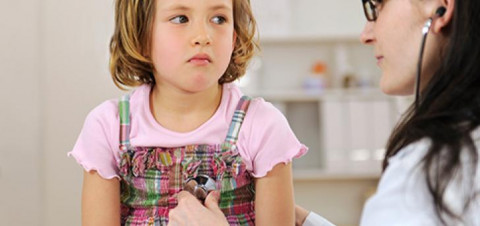
PAEDIATRICIANS don’t necessarily follow guidelines for diagnosing autism, a lapse which may underpin Australia’s galloping increase in the disorder, an Australian study suggests.
Autism spectrum disorder (ASD) is one of the most common diagnoses made by paediatricians after ADHD and specific learning disorders, researchers say.
But their study confirms not all of the physicians adhere to diagnostic recommendations for autism more than 50% of the time.
One problem was long waiting lists for recommended cognitive/developmental and speech pathology assessments, while only about 75% of paediatricians ordered recommended genetic and audiology assessments in more than half of cases.
The study cited a 2013 survey showing more paediatricians in WA used cognitive assessments (60%) than those in NSW (34%), Victoria (28%) and Queensland (13%).
Child development expert and University of WA academic Professor Andrew Whitehouse says inconsistent diagnostic criteria are one reason for the fast increase in the prevalence of the condition.
“What we are all concerned about is that rates of autism are increasing. There is no doubt about that and one of the factors that has led to that increase is lax standards around the diagnostic process,” Professor Whitehouse says.
The Australian Bureau of Statistics estimated 115,400 Australians had autism in 2012, with peak prevalence in the 5—9 age group, nearly double the figure of 64,400 in 2009.
GPs should be alert to early signs of autism, Professor Whitehouse says. It’s important that GPs improve their understanding of the condition to ensure timely referrals to a paediatrician or child psychologist.
“GPs are the first line of attack. Often when children start developing differently it’s through the child health nurse or the GP that these concerns are first raised. So a greater awareness of what behaviours comprise autism in the very early years is absolutely critical to the diagnostic process,” he says. “We need greater awareness and greater training among all frontline professionals, and that includes general practitioners.”
RACGP president, Frank Jones, says autism is “a difficult area” that needs the involvement a team of health professionals after developmental issues have been identified. Services around Australia are “variable” and need better co-ordination, he says.
Last year the University of WA launched a graduate certificate course for medical professionals in autism diagnostics, which he says is the first of its kind in Australia and possibly the world.
Professor Whitehouse, also program director at the Cooperative Research Centre for Living with Autism, says WA’s diagnostic criteria requires the participation of a speech pathologist, a psychologist and a paediatrician, but other states have less strict recommendations.
He says the roll-out of the National Disability Insurance Scheme (NDIS) will provide an opportunity to adopt uniform standards for diagnosing autism under one umbrella. “One way to ensure that the NDIS is essentially catering to all those people it needs to cater to is tightening up that process.”
- Source: J Paed Child Health 2016; online 18 January